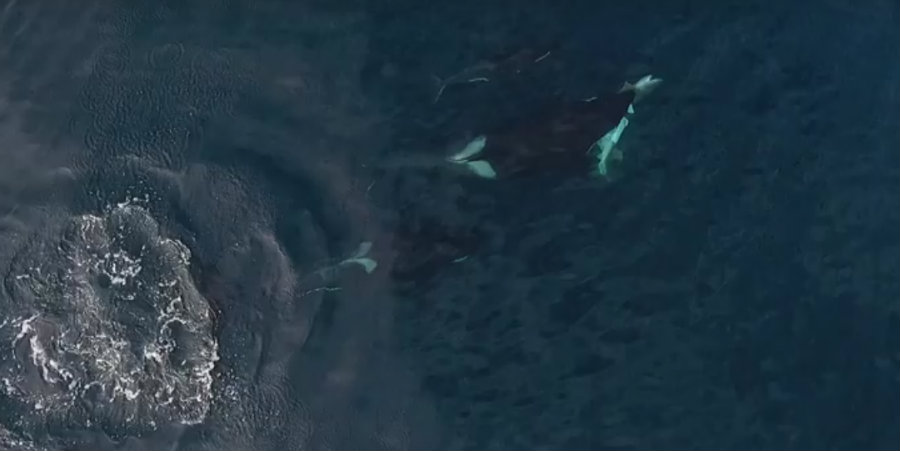Two offshore killer whales and their calves were recorded killing and eating a shark in Monterey Bay, California. The video is unique considering this kind of whale often hunt and kill their prey underwater and show up in California once a year around this time of the year.
The footage was captured by drone photographer and videographer Slater Moore Tuesday while he was with a whale watch tour group under the company Monterey Bay Whale Watch. The group was traveling aboard the Sea Wolf II in the morning, around 09:00 a.m. when they spotted the offshore killer whales.

There are three different ecotypes of killer whales in Monterey Bay, including the offshore killer whales, which feed on fish, squid, and sharks. This is the less known killer whale species in Monterey Bay because they are generally seen once a year during the winter and happen to be unpredictable.
Offshore killer whales travel in large groups of 50 to 100 whales and have the longest range movements discovered for any killer whale so far. They have been spotted in California and as far north as the Bering Sea in Alaska. Where they spend their time in between is unknown.
The video: Two female offshore killer whales kill and eat what it seems to be a sevengill shark calves
The commercial whale watching cruise took off early Tuesday from Monterey Bay. The group spotted about a dozen offshore killer whales in deep water about 16 miles from Monterey Harbor that day before realizing two of them, and two killer whale calves were hunting on the surface.
Moore and the crew spotted the hunting activity and took the opportunity to fly his drone to capture the scene. The video shows two female offshore whales and two calves swimming on the surface. All of the sudden one of the whales brought their prey off the water, and the whale watching group discovered the killer whale had a shark on her mouth.
Katlyn Taylor, a marine biologist that was on the Sea Wolf II with the group, said the shark was still alive and squirming around when they saw it for the first time. Taylor believes the offshore killer whales prey was a sevengill shark calf and that the other whales were also hunting other shark calves. The sevengill shark is common in California and can grow up to three meters and weight 107 kilograms. It has a lifespan up to 50 years.
Killer whales in Monterey Bay
Apart from offshore killer whales, the transient killer whales, and resident killer whales visit the Monterey Bay. Transient killer whales feed on mammals only, and resident killer whales eat fish.
Although they all are killer whales, each population type is genetically distinct from the others, and there is no interaction among them. Resident, transient and offshore killer whales have different vocalizations, exhibit unique social grouping and have different hunting tactics. They all look physically different, and the do not intermix.
Offshore killer whales hunting are a rare scene to see because sharks often swim in deep waters. Thus, the hunt takes place out of the human eyes’ reach.
The Monterey Bay Whale Watch posted on their Facebook page that offshore killer whales were last seen on the Bay last December.
Source: Monterey Bay Whale Watch
